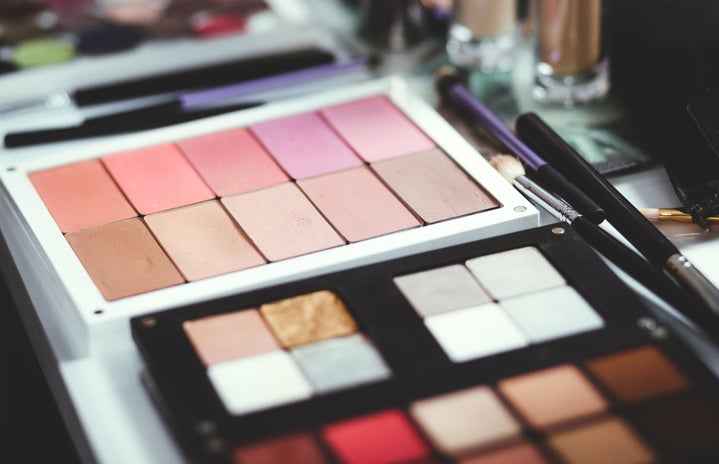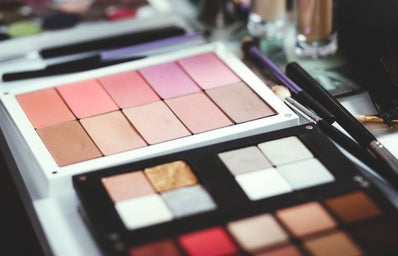If there is one question I get asked more than anything else in my line of work is how to get flawless skin and which foundation to use to get the coveted “air brushed” look. I always reply that it’s not particularly down to which foundation you use but your skin’s own condition and the application process. In this article I hope to debunk some common skin care myths to help you achieve your very own high definition sculpted look.
1) Skin Care
Good foundation or “base” as it is sometimes known is the basis of every flawless make-up look – you could have the most beautifully done eyebrows or the prettiest eye shadow, but if the skin itself is not up to scratch, the whole look will be sloppy and ruined. However taking things a step even further back from make-up and to the condition of your skin is the key. I can’t tell you how many times I have struggled to achieve an even base, due to the client’s uneven skin texture. The most common culprit is dry, flaky skin which no amount of buffing and powders can fix. To avoid this undesirable fate it is important to have a good skin care regime set up. Taking things back to basics you should have a “Cleanse, Tone and Moisturise” as the holy trinity, adding in any little extras such as serums, eye creams and face masks if you require or need them.
Cleansers: This should be the first step in your routine (done twice daily) and its purpose is to clear away oils, dirt and other impurities from the skin. The best way to go, to keep skin baby soft, is to use a gentle (and I stress that word!) exfoliator every single day (many people claim this isn’t ideal but there is no reason why you can’t use a microfoliant daily, they are more gentle than rubbing a towel against your face and prevent dry patchy build up) . I usually use an exfoliator in the morning, prior to my make-up application to give the smoothest possible canvas to apply to. You can then choose from either, gel, cream or mousse cleansers. Gel and mousse tend to be the best for oily skin types, cream is good for a dry skin type. Remember that non foaming cleansers (such as milks/waters) and face wipes are not really a “face wash” per se and should be used in conjunction with a wash off cleanser or soap.
Toners: This is the step most easily dismissed but it really is an integral part of clarifying the skin and helping to remove the last smidgens of grime left over post cleansing. Think of it as the Robin to the cleanser Batman! They tend to have an alcohol content (although some do come without) which helps to shrink the appearance of pores – this makes a huge difference to the evenness of the skin’s surface and helps to stop blackheads from forming. Although an astringent can be slightly drying for skin, this is quickly counteracted by the application of moisturiser and should not put off those with dry or tight skin types. If you are a sensitive skin type and are still sceptical, just opt for an alcohol free toner. Remember to wait for your toner to “dry off” before moisturiser application.
Moisturiser: There have recently been studies into the effectiveness of moisturisers and it was found that fancy ingredients do not make that much of a difference from your bog standard cheap cream. The most import thing is to get that moisture boost into your skin (even if you have an oily skin type!). Moisturiser works in the opposite way that botox does. Botox freezes the muscles and prevents the skin from creasing, whereas moisturiser makes the skin more supple and able to flex with the movements and contours of the face. This means that lasting effects from facial movements do not affect the skin as much as if it were dry and stiff a.k.a. less wrinkles! There is a plethora of moisturisers available on the market with differing emollient contents depending on your skin type. Obviously the higher oil content the more suited it is for drier skins and vice versa. Just find an affordable option that you are happy with and you’re good to go! (p.s. “anti-ageing” moisturisers and those for mature skin tend to be the richest creams). It is important to somehow get some UV protection as well, be that in the crème itself, as an extra product or by using foundation as a sun block (the pigments stop the UV rays from reaching your skin).
2) Foundation
Foundation types are again plentiful and the huge array you are presented with can be alarming. However there are some key things to remember which will help you make an educated foundation choice which suits you, rather than being bullied into buying something you didn’t want by the sales assistant! Foundations in general come in three coverage’s; light, medium and heavy. These labels relay back to how much colour “pigment” is in the foundation, the more pigment you pack into a liquid the thicker it becomes and the heavier the coverage. The most popular, for obvious reasons, is the medium. Though most sales assistants will refer to it as “medium buildable” – simply put, the more foundation you use, the more pigment there is to cover your skin underneath and all foundations are “buildable” though it is harder to get a heavy coverage with a light foundation. There is then the matter of shade, most foundations come with either warm, neutral or cool tones. The simplest way to determine your skin tone is by looking at your veins; if they appear greenish this indicates you have yellow undertones and thus would have a warm skin tone. Veins that appear to be more bluish indicate a cool skin tone meaning you have more of a pink complexion. A lot of ladies like to buy a neutral foundation to cancel out excessive expression of yellow or pink in their skin. All foundations also have an amount to which they “dry down”. Dewy foundations will dry down the least, giving a slightly wet look to the foundation, semi-mattes dry down to some degree whilst not looking too dry and matte foundations dry down completely. The final character is the luminescence of a foundation. Nearly all foundations contain some AB micro-shimmer in to lift the complexion and give a healthy glow, though some have more than others. Those with blemish prone skin or with wrinkles should still clear of foundations that are too shimmer packed as they draw attention to imperfections in the skin, a matte foundation will be without any visible luminescence added and best for these skin types. An important note which many people do not know about foundations is that they will always oxidise on contact with air and darken to around ½ – 1 shade darker than the colour in the bottle. To avoid the oh-so-dreadful-“tideline”, it is best to opt for a shade lighter than your skin. All these pointers go for whichever formula you prefer to use be it crème, solid or liquid.
3) Application
Again there are a multitude of tools available to help you apply your make-up like a pro and the choice can be daunting. To be honest they are all just different means to the same end and its more about how you use the tool not which tool you use. People are most familiar with foundation brushes to be the applicator of choice as this is what is commonly seen at beauty counters. However there are now many more better advanced and better suited tools for applying a base and this is simply a nod to the fact that most beauty counters brush sets aren’t really up to date! Most of the counter girls will probably not use a brush to apply their own foundation and only use them on customers as this is what they are supplied with. The key to an even and impeccable foundation layering is a method known as “stippling” this is where you do not rub the foundation in, you bounce or buff it across the skin thus creating one uniform canvas of even distribution. You can stipple with any tool be it fingers or brushes (even the dreaded foundation brush – it’s just harder!) but brushes such as duo fibres make this job much easier given the larger flat surface area on the top of the brush. My number one Holy Grail item which surpasses even duo fibres is the “Beauty Blender”. It is a conical sponge with a tapered end and when used, the moist gives the most beautiful, even and effortless application. It truly gives an airbrushed effect. It also feels comfortable and light and was designed with stippling in mind.
A great trick for creating a desirable face shape is the method of “countouring or highlighting”. Basically you are actually faking the formation of light and shadows with dark and light make-up to give an illusion of a face shape you do not actually have. You can achieve contouring either via your base itself or by placing powders on top of your finished foundation. In reality a mix of both these methods usually works best. The contour refers to the dark shade used to create the illusion of shadows on the facial planes and highlight is the lighter shade used to create the illusion of light spilling onto that area of the face. Once your foundation/base is done, simply “set” with the powder of your choice by buffing/fluffing on with a large brush or pressing in with a powder puff (pressing in will apply more powder to the chosen area but will seal more effectively, use this for areas which need extra setting in place such as under the eyes and over concealer). If you feel you look “too powdery” a quick spritz with a setting/finishing/sealer spray will fix this.

